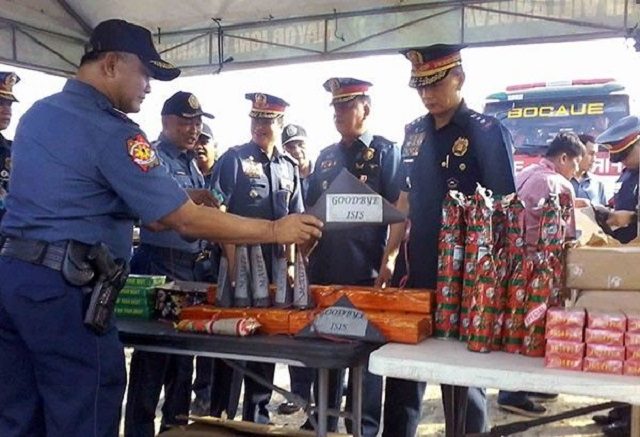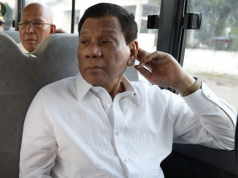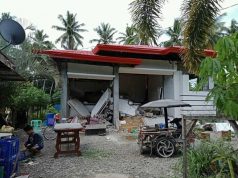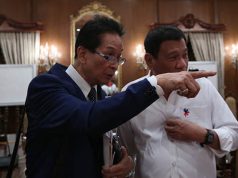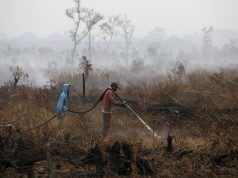Government agencies and the Philippine National Police (PNP) continue their crackdown on firecrackers, once a mainstay in Filipinos’ New Year traditions, as the beginning of 2019 draws near.
Police were seen on December 28, Friday, inspecting firecracker stalls in Bocaue, Bulacan, where several firecracker manufacturers are located. Products included in the list of prohibited firecrackers were confiscated.
Meanwhile, a number of banned fireworks discovered in the Cagayan Valley were immediately destroyed after confiscation.
PNP PCSupt. Valeriano De Leon in an interview with CNN Philippines said that the police would be conducting safety inspections in firecracker stalls and factories in time for the New Year’s celebrations.
He acknowledged that the use of firecrackers is deeply embedded in Filipino culture, particularly in Metro Manila.
“I spent Christmas and New Year in Davao and it was nice to celebrate in a solemn way, but in Manila, getting rid of firecrackers is a bit hard,” he said during the interview.
A standing ordinance totally banning firecrackers and pyrotechnic devices is still in place in Davao City in Mindanao.
He also reminded the public that importation of fireworks is prohibited and that the Bureau of Customs would prevent any illegal firecrackers or fireworks from entering the country.
Government agencies in the days leading up to New Year’s Eve have also released safety reminders for the public.
The Department of Health urged the public to refrain from using firecrackers to celebrate and instead watch accredited fireworks displays.
The Department of Interior and Local Government likewise released an infographic on which firecrackers are prohibited.
On the list are once-popular firecrackers such as the watusi, piccolo, super lolo, pla-pla and five star. More recent favorites such as Bin laden and the Boga are also listed.
Violators can be imprisoned for six months up to one year and be imposed with a fine ranging from P20,000 to P30,000.
A list of allowed firecrackers and pyrotechnics can be found here.
How the crackdown came to be
Filipinos’ are believed to have used fireworks and firecrackers since the Spanish colonial era. They were brought to the country by the Chinese, the inventors of firecrackers. The tradition is based on the belief that the noise will drive away bad luck and bad spirits, and will usher in a safe and prosperous new year.
The growing amount of firecracker-related injuries over the years however led to clamor to regulate the general public’s use of fireworks and firecrackers.
In June 2017, President Rodrigo Duterte signed Executive Order 28 which limited the use of firecrackers to “community fireworks display.” Such displays, according to the order, must be under police supervision.
The DOH credited the order for reducing the number of firecracker-related injuries during the 2018 New Year’s celebrations. The agency recorded 191 injuries from December 21, 2017 to January 1, 2018, a 68 percent drop from the same time period in 2016 to 2017.
The number was also a 77 percent drop from the five-year average from 2012 to 2016, according to the DOH.
The government continued to implement a stricter policy on firecrackers in 2018. In October, Duterte ordered a halt to the processing of firecracker manufacturing licenses and the distribution of permits.
The police has also urged Manila residents to use the designated firecracker zones in their respective local government units for a safe New Year’s celebration.

